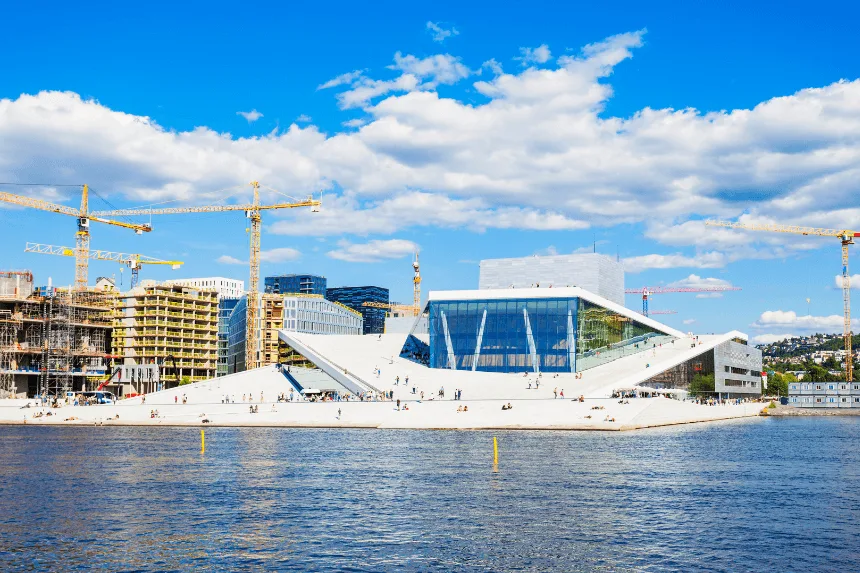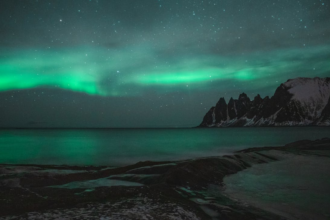Looking to explore a destination where eco-innovation, community, and convenience live side-by-side? In Oslo’s vibrant Vulkan neighbourhood, sustainable urban travel isn’t just a concept—it’s daily life. Just a two-hour flight from London, Oslo delivers a fresh perspective on what a modern city break can be: walkable, efficient, and deeply connected to nature.
- What Transformed Vulkan into Oslo’s Sustainability Icon?
- How Does Vulkan Integrate Eco-Friendly Innovation?
- What Experiences Await You in Vulkan?
- How Does Vulkan Reflect Oslo’s Broader Green Ethos?
- Why Is Vulkan So Easily exploited in One Day?
- How Can You Truly “Life-See” Oslo Like a Local?
- Conclusion: Why Oslo is the Future of Sustainable Urban Travel
More than just a layover destination, the Norwegian capital offers a unique sense of calm rarely found in global cities. And nowhere is this ethos more clearly seen than in Vulkan, a compact, revitalised neighbourhood that proves how powerful smart, sustainable design can be.
What Transformed Vulkan into Oslo’s Sustainability Icon?
Vulkan’s story is one of radical reinvention. Once a neglected industrial zone lining the Akerselva River, the area was dotted with broken glass, crumbling warehouses, and graffiti-covered walls. “Kids weren’t allowed to play here,” said Sverre Landmark, a former director at Aspelin Ramm, one of the key developers behind Vulkan’s transformation. “It was really nasty.”
That all changed in 2004. Developers Aspelin Ramm and Anthon B Nilsen acquired the blighted land with a bold vision: turn it into a self-contained, eco-conscious urban village. What followed was a masterclass in smart urban regeneration, rooted in sustainable urban travel principles.
How Does Vulkan Integrate Eco-Friendly Innovation?
At the core of Vulkan’s development is environmental performance. Beneath the square lie geothermal wells over 300 meters deep, supplying the majority of the area’s heating needs. On rooftops, solar panels quietly generate renewable energy, supporting cooling systems during the warmer months.
Scandic Vulkan, the district’s flagship hotel, exemplifies this commitment. It holds Norway’s first “energy class A” certification under EU standards, meaning it operates with maximum energy efficiency. Even smaller structures like shops and eateries are designed for low emissions and smart energy use.
Not only is the infrastructure energy-conscious, but even the urban design supports sustainable urban travel. With everything within a walkable block, there’s no need for vehicles. Restaurants, offices, gyms, and cultural venues are all close at hand, promoting low-impact living without sacrificing convenience.
What Experiences Await You in Vulkan?
This eco-forward thinking doesn’t come at the expense of culture or fun. Vulkan is a bustling microcosm of Oslo’s creativity and culinary flair. At the centre is Mathallen, Norway’s first indoor food hall. Housed in a renovated cast iron factory, it features over a dozen food stalls and restaurants. Whether you’re in the mood for fresh oysters, handmade pasta, bao buns, or craft beer, there’s something for every palate.
Nearby, Dansens Hus, Norway’s national contemporary dance theatre, adds a touch of artistic flair. If music is more your thing, Vulkan Arena regularly hosts international acts in a space that retains its industrial charm. From indie rock to experimental jazz, the lineup keeps the neighbourhood buzzing year-round.
Despite this rich cultural offering, Vulkan remains remarkably peaceful. Thanks to its pedestrian-first layout and smart spatial planning, even busy days feel relaxed and uncluttered—yet another testament to the success of sustainable urban travel in action.
How Does Vulkan Reflect Oslo’s Broader Green Ethos?
Vulkan may be unique, but it isn’t an outlier. Oslo as a whole has embraced bold environmental policies. Since 2017, petrol-powered vehicles have been banned from the city centre. In their place? Electric taxis, emission-free buses, and an extensive network of cycle lanes and trams.
This shift toward clean transit has transformed Oslo’s atmosphere. Streets feel quieter, cleaner, and more open. Pedestrians and cyclists move freely without the constant presence of traffic. The result is a city that feels both modern and serene.
These changes aren’t accidental. Norway aims to be carbon-neutral by 2030 and reach net-zero emissions by 2050. That ambitious agenda is made tangible through projects like Vulkan—where sustainable urban travel isn’t just encouraged, it’s designed into the landscape. Read another article on Trump 2nd Term Travel Policy Impact
Why Is Vulkan So Easily exploited in One Day?
Thanks to its compact footprint—just 9,400 square meters—Vulkan is ideal for travellers short on time. You can walk from the river to the top of the square in less than five minutes, yet within that short distance lies a complete urban ecosystem.
From coffee shops and co-working spaces to boutiques and climbing gyms, the variety is impressive. And because everything is so close, visitors get to truly experience the area rather than simply pass through. You can have a conversation with a vendor, watch a dance rehearsal, or linger over a locally brewed IPA without rushing.
For those looking to make the most of a 24-hour stop in Oslo, sustainable urban travel makes Vulkan a perfect micro-itinerary.
How Can You Truly “Life-See” Oslo Like a Local?
To understand Oslo’s lifestyle, step outside Vulkan and head towards the waterfront. In Bjørvika—a newer district that shares Vulkan’s eco-conscious DNA—you’ll find floating saunas bobbing gently on the Oslofjord.
Here, locals alternate between near-80°C heat inside wooden cabins and icy plunges into the fjord. It’s a traditional Nordic experience, but also one that ties into modern ideals of wellness and natural living. Even these floating saunas are powered sustainably and designed with minimal impact.
Spending time here after exploring Vulkan offers the perfect contrast: from the heartbeat of urban sustainability to the soul-soothing calm of Oslo’s natural environment.
Conclusion: Why Oslo is the Future of Sustainable Urban Travel
Vulkan is more than just a regenerated district. It’s a living, breathing model of how cities can be greener, healthier, and more connected. Its energy systems, transportation design, cultural spaces, and urban layout all support sustainable urban travel without compromising on experience or comfort.
Oslo, in turn, is proving that cities don’t have to choose between development and sustainability. With the right vision and planning, they can have both. If you’re looking to explore a city that doesn’t just show you the future—but lives it—Oslo should be at the top of your list.








